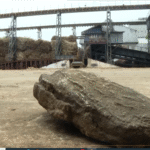
Sri Lanka Gains Boost from IMF Engagement, U.S. Tariff Cut, and EU Apparel Demand
- CNL Reporter
- August 2, 2025
- Weekly Economic Review
- Apparel, IMF, Sri Lanka
- 0 Comments
Weekly Economic Review
Sri Lanka’s economy continued on a path of cautious stabilization during the week ending August 1, 2025, supported by positive developments in international cooperation, improving export performance, easing deflation, and strong signals from both the International Monetary Fund (IMF) and the United States. While structural challenges remain, the convergence of several favorable economic indicators has provided a moderate boost to market sentiment and policy confidence.
U.S. Lowers Tariff to 20%: Some Relief, but Not a Game-Changer
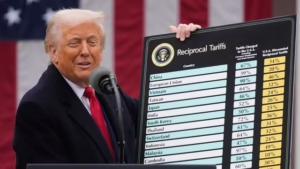
In a major external development, the United States announced a reduction in import tariffs on Sri Lankan goods from 30% to 20%. This partial rollback follows more than a year of heightened trade barriers, originally imposed in 2023 following Sri Lanka’s macroeconomic and political crisis. While the 10-percentage-point reduction is a welcome move for Sri Lankan exporters, especially in key industries like textiles, rubber-based products, and ceramics, the country still faces higher-than-average duties compared to competitors with preferential trade access to the U.S.
The apparel sector, which accounts for nearly 40% of Sri Lanka’s total exports, has been particularly affected by the U.S. tariffs. While orders from the U.S. remain sluggish in 2025, the reduction in tariffs is expected to encourage marginal growth in export volumes and improve factory order books by Q4. Trade analysts argue that although the 20% tariff still places Sri Lankan products at a competitive disadvantage, it may signal Washington’s willingness to re-engage with Colombo more constructively, possibly laying the groundwork for future trade concessions.
Moreover, this tariff reduction may reflect broader geopolitical recalibration by the U.S. in the Indo-Pacific, where Washington is seeking to support democratic and reform-oriented partners. Analysts view this as a signal that Sri Lanka’s commitment to economic reforms under the IMF program is being acknowledged internationally.
IMF Mission Concludes; Staff-Level Agreement Expected This Fall
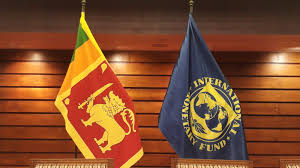
Sri Lanka completed the IMF’s fourth review mission under the $2.9 billion Extended Fund Facility (EFF) in late June. The IMF has not yet announced a disbursement following this review, but officials indicated that progress is satisfactory and a staff-level agreement is likely during the fifth review expected in the fall.
Julie Kozack, Director of the IMF Communications Department, stated:
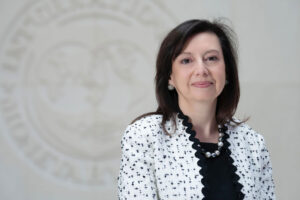
“As the staff team moves forward to the Fifth Review, which we expect will be held in the fall, we will, of course, be looking at the overall macroeconomic performance, reforms, and commitments under the program. We are in ongoing discussions with the Sri Lankan authorities.”
This forward-looking statement underscores the IMF’s continued engagement with Sri Lanka and its cautious optimism about the country’s reform momentum. The key pillars being evaluated by the IMF include:
Fiscal consolidation: Continued improvements in tax collection and spending controls are noted, although vulnerabilities remain due to public sector salary demands and rising social expenditure.
Energy and SOE reforms: Progress in rationalizing fuel and electricity pricing, along with restructuring of major State-Owned Enterprises (SOEs), is being closely tracked.
Debt restructuring: Finalization of agreements with external creditors remains a central condition for future disbursements. Sri Lanka has made headway with bilateral creditors, but negotiations with commercial lenders are ongoing.
The IMF’s endorsement is crucial not only for access to the next tranche of funds but also for maintaining international investor confidence and unlocking additional bilateral and multilateral financial support.
Inflation Trends: Deflation Continues, But Softens

Sri Lanka’s consumer prices in Colombo fell 0.3% year-on-year in July, marking the eleventh consecutive month of deflation but showing signs of bottoming out compared to the 0.6% YoY drop recorded in June. This was the softest rate of deflation in ten months, suggesting that price declines are easing and domestic demand may be gradually recovering.
Core inflation metrics also point to a stabilization trend, giving the Central Bank more room to assess future rate cuts. While prices of food and fuel have remained relatively stable, inflationary risks could re-emerge later in the year, particularly if global commodity prices rise or the rupee weakens?
CBSL Market Operations and Monetary Policy Signals
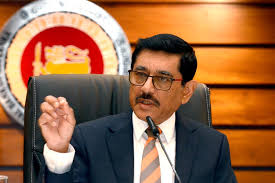
The Central Bank of Sri Lanka (CBSL) released its third Market Operations Report (MOR) for 2025 on July 31, providing transparency into its liquidity management, interest rate setting, and foreign exchange market activities. The report outlines how the Central Bank is conducting operations under the Flexible Inflation Targeting (FIT) regime, balancing the dual objectives of price stability and economic recovery.
Notable points in the report include:
Active absorption of excess liquidity through repo auctions.
Continued management of the exchange rate through selective interventions.
Maintenance of policy rates at supportive levels to encourage credit growth.
The CBSL reiterated its cautious stance, noting that while inflation has been subdued, any premature easing of policy could derail hard-earned macroeconomic gains.
External Sector Performance: Apparel Exports to EU and UK Rise Sharply
Sri Lanka’s export sector received a notable boost from strong apparel shipments to the European Union and the United Kingdom in July. Apparel exports to the EU rose 23.1% year-on-year, while exports to the UK increased by 20.4%. This surge has helped offset weak performance in the U.S. market and underscores the importance of retaining GSP+ and similar trade benefits in Europe.
The European retail recovery, combined with stable production costs and a favorable rupee exchange rate, has made Sri Lankan apparel exports more attractive. However, exporters caution that rising input costs and labor issues could pose challenges in the months ahead.
Banking Sector Resilience and Structural Compliance

Banking sector performance showed mixed but generally positive signs. PABC Bank reported a 71% increase in net profits for the June 2025 quarter, indicating strong lending margins and improved asset quality. Meanwhile, Cargills Bank is undergoing restructuring to comply with CBSL’s regulatory requirement to reduce single-shareholder dominance. The bank plans to diversify its ownership structure and raise additional capital to meet compliance benchmarks.
These developments are seen as positive steps in enhancing the resilience and transparency of the financial system, which remains under scrutiny by international lenders and ratings agencies.
President’s Visit to Maldives: Investment and Tourism Cooperation Strengthened
The state visit of President Anura Kumara Dissanayake’s visit to Maldives this week opened new opportunities for economic and investment cooperation between the two Indian Ocean neighbors. Talks centered on boosting bilateral trade, promoting joint ventures in hospitality and construction, and improving educational exchanges.
Maldivian President Muizzu pledged support for cross-border tourism promotion, renewable energy cooperation, and infrastructure investment. A Sri Lanka–Maldives Business Council is expected to be launched soon, aimed at institutionalizing business ties and facilitating private-sector engagement.
This diplomatic engagement is timely, as Sri Lanka seeks to expand its investment inflows and diversify its economic partnerships beyond traditional allies.
Market Watch and Commodities

The Colombo Stock Exchange (CSE) ended the week on a mixed note after reaching an all-time high in mid-July. Investor sentiment is buoyed by improving macroeconomic signals, although concerns over political stability and budgetary risks linger. Meanwhile, average coconut prices at weekly auctions saw a modest rise, reflecting steady demand from both domestic buyers and overseas markets.
Outlook
Sri Lanka’s economic trajectory is slowly tilting toward recovery, buoyed by easing deflation, better export performance, continued IMF backing, and limited but symbolic tariff relief from the U.S. However, structural challenges — particularly in fiscal management, SOE reform, and debt resolution — remain pressing.
As Sri Lanka prepares for its 2026 Budget and advances its IMF program targets, the coming months will be crucial in determining whether recent gains can be sustained and translated into lasting growth.
